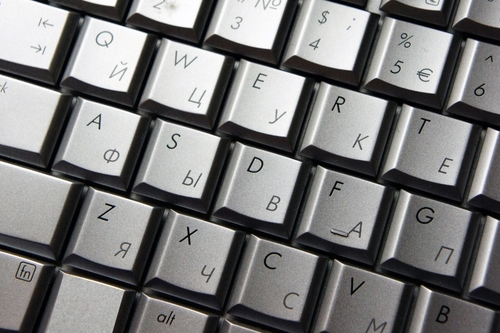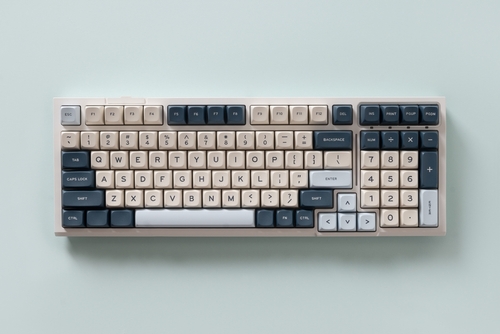Walk into any electronics store across different countries, and you’ll notice something curious about the keyboards on display. The letters, symbols, and even the arrangement of keys vary significantly from one region to another. What might seem like a simple typing tool actually reflects centuries of language evolution, technological development, and cultural adaptation.
Understanding these differences helps explain why typing feels natural in your native language but becomes challenging when you encounter an unfamiliar layout. The story behind keyboard variations reveals how technology adapts to serve diverse linguistic needs across the globe.
This exploration will uncover the historical reasons behind these differences, examine the most common layouts worldwide, and explain how language requirements shape the keyboards we use every day.
The Historical Foundation of Keyboard Design
The modern keyboard traces its roots back to the typewriter, invented in the 1860s. Early typewriter designers faced a fundamental challenge: preventing mechanical keys from jamming when pressed in rapid succession. This led to the development of the QWERTY layout, named after the first six letters in the top row.
Christopher Latham Sholes, the QWERTY layout creator, deliberately separated commonly used letter pairs to reduce mechanical conflicts. This design prioritized mechanical function over typing efficiency. When computers replaced typewriters, the QWERTY layout persisted because millions of people had already learned to type using this arrangement.
However, this English-focused solution didn’t address the needs of other languages. Each language uses different letter frequencies, special characters, and accent marks. German requires umlauts (ä, ö, ü), French needs various accent marks (é, è, ç), and Spanish uses the ñ character. These linguistic requirements demanded keyboard modifications.
The transition from mechanical typewriters to electronic keyboards provided opportunities for layout optimization, but established typing habits created resistance to change. This tension between efficiency and familiarity continues to influence keyboard design decisions today.
Major Keyboard Layouts Around the World
QWERTY Variations

The original QWERTY layout dominates English-speaking countries, but even within this family, variations exist. The US QWERTY layout differs from the UK version in symbol placement and includes different punctuation arrangements.
International QWERTY layouts accommodate special characters through modifier keys or dead keys (keys that don’t produce characters until combined with others). This approach allows typing in multiple languages while maintaining the familiar QWERTY letter arrangement.
AZERTY Layout

French-speaking regions primarily use the AZERTY layout, which reorganizes letters to better suit French language patterns. The A and Q keys switch positions compared to QWERTY, and the layout provides direct access to French accent marks.
Belgium uses a slightly modified AZERTY version that includes additional symbols commonly used in business and technical contexts. These regional adaptations demonstrate how keyboard layouts evolve to meet specific user needs.
QWERTZ Layout

German-speaking countries adopted the QWERTZ layout, which swaps the Y and Z keys from the QWERTY arrangement. This change reflects the higher frequency of Z in German compared to Y. The layout also provides dedicated keys for German umlauts and the sharp s (ß) character.
Switzerland uses a variant that accommodates German, French, and Italian characters, reflecting the country’s multilingual population. This adaptation shows how keyboards serve diverse linguistic communities within single nations.
Cyrillic Layouts

Russian keyboards use Cyrillic script, requiring completely different character sets. The most common Russian layout places frequently used Cyrillic letters in accessible positions while maintaining some similarity to QWERTY for users familiar with Latin scripts.
Other Cyrillic-using countries developed their own variations based on their specific languages and historical typing traditions. Bulgaria, Serbia, and Ukraine each use distinct arrangements optimized for their linguistic patterns.
Asian Input Methods

Asian languages present unique challenges due to their character complexity. Chinese keyboards don’t directly input Chinese characters but instead use input methods that convert Latin letters into Chinese text through various systems like Pinyin.
Japanese keyboards support multiple scripts (hiragana, katakana, and kanji) through complex input methods. Users can switch between different input modes depending on the text they want to create.
Korean keyboards use the Hangul layout, designed specifically for the Korean writing system. The arrangement reflects the logical structure of Korean characters and their combination patterns.
Language Requirements Shape Keyboard Design
Different languages place varying demands on keyboard layouts based on their unique characteristics. Letter frequency analysis reveals why certain arrangements work better for specific languages.
Accent Marks and Special Characters
Romance languages require extensive accent mark support. Spanish needs acute accents, tildes, and the inverted question mark. Portuguese uses circumflex accents, cedillas, and nasal tildes. Italian requires grave and acute accents along with apostrophes for contractions.
Keyboards serving these languages must provide efficient access to these marks without disrupting normal typing flow. Solutions include dead keys, modifier combinations, and dedicated accent keys.
Character Frequency Optimization
Each language exhibits distinct letter frequency patterns. While E is the most common letter in English, other languages show different distributions. Spanish uses A more frequently, German relies heavily on E and N, and French shows high usage of E and A.
Optimal keyboard layouts position frequently used characters in easily accessible locations. The home row keys (where fingers naturally rest) should contain the most common letters for efficient typing.
Punctuation and Symbol Differences
Business and technical writing requirements vary across cultures. European layouts often prioritize currency symbols (€, £, ¥), while American layouts emphasize technical symbols (#, $, @).
Mathematical and scientific notation needs also influence layout decisions. Countries with strong engineering traditions may provide better access to technical symbols and mathematical operators.
Regional Standards and Manufacturing
National standards organizations play crucial roles in keyboard layout specifications. These bodies balance efficiency, tradition, and practical implementation concerns when defining official layouts.
Standardization Bodies
The International Organization for Standardization (ISO) provides guidelines for keyboard layouts, but countries often adapt these standards to local needs. The American National Standards Institute (ANSI) defines US keyboard specifications, while European countries follow ISO standards with national modifications.
These standards ensure compatibility across manufacturers while allowing cultural customization. Users can purchase keyboards from different brands with confidence that the layout will match their expectations.
Manufacturing Economics
Keyboard production economics influence layout availability. Popular layouts benefit from economies of scale, making them more affordable and widely available. Specialized layouts for smaller language communities often cost more due to limited production volumes.
Global manufacturers must balance inventory complexity against market demand. They typically produce major layouts for broad distribution while offering specialized versions for specific regions or professional users.
Modern Adaptations and Digital Solutions
Technology continues to reshape how we approach keyboard layout challenges. Software solutions now provide alternatives to hardware-based layout limitations.
Software-Based Solutions
Operating systems offer multiple keyboard layouts that users can switch between digitally. This flexibility allows single keyboards to serve multiple languages through software configuration rather than hardware changes.
Virtual keyboards on touchscreen devices can dynamically adapt to different languages and contexts. Mobile devices automatically adjust layouts based on detected text language or user preferences.
Programmable Keyboards
Enthusiast keyboards now offer complete programmability, allowing users to create custom layouts optimized for their specific needs. These keyboards can store multiple layouts and switch between them instantly.
Professional users in specialized fields can create layouts optimized for their work, whether programming, data entry, or multilingual document creation.
Frequently Asked Questions
Why don’t all countries use the same keyboard layout?
Languages have different character requirements, letter frequencies, and punctuation needs. A layout optimized for English doesn’t work efficiently for German umlauts, French accents, or Cyrillic scripts. Each layout represents centuries of optimization for specific linguistic patterns.
Can I change my keyboard layout without buying new hardware?
Yes, most operating systems allow you to install and switch between different keyboard layouts through software settings. You can type in multiple languages using the same physical keyboard by changing the software layout.
Which keyboard layout is the most efficient?
Efficiency depends on the language being typed. QWERTY works reasonably well for English but isn’t optimal. Alternative layouts like Dvorak claim higher efficiency for English, while other languages benefit from their specialized layouts (AZERTY for French, QWERTZ for German).
How do programmers handle different layouts when coding?
Many programmers learn to code using their native layout, but some switch to US QWERTY for programming because most programming languages were designed with this layout in mind. Software development tools also offer customizable keyboard shortcuts to accommodate different layouts.
Are there universal keyboard solutions?
Some international layouts attempt to serve multiple languages, and programmable keyboards offer customization options. However, truly universal solutions often involve compromises. The most practical approach usually involves software-based layout switching on standard hardware.
The Future of Global Keyboard Design
Keyboard layouts continue evolving as technology advances and global communication increases. Understanding these differences helps us appreciate how deeply intertwined language and technology have become.
The persistence of century-old designs alongside cutting-edge programmable solutions demonstrates the complex balance between tradition and innovation in interface design. While QWERTY may seem inefficient by modern standards, its widespread adoption creates network effects that maintain its dominance.
As remote work and international collaboration grow, multilingual typing skills become increasingly valuable. Learning to navigate different keyboard layouts opens doors to better communication across cultures and languages.
Consider exploring layout options available on your devices—you might discover more efficient ways to express yourself in your native language or gain the ability to communicate in new ones.
